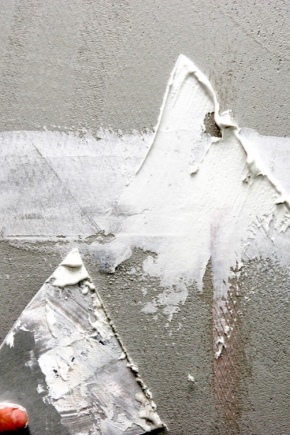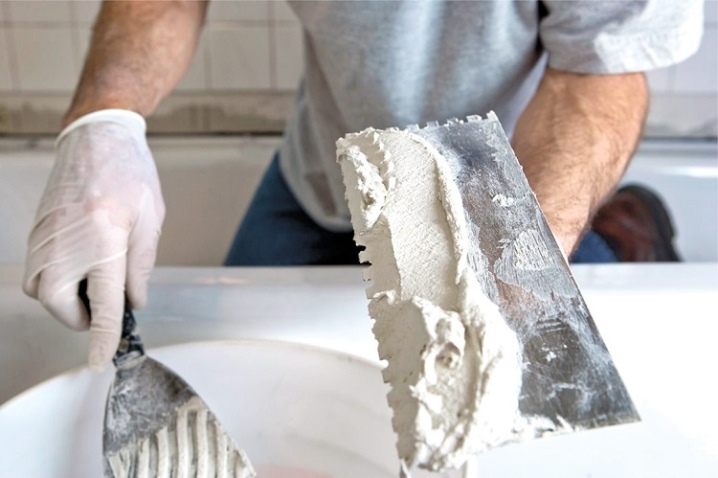How long does alabaster dry?

Alabaster Is a dry construction mixture, which is obtained by burning crushed gypsum. The material is often used in construction and repair for the manufacture of plates, panels, filling cracks or seams, and decorating surfaces. He, like any other building and finishing material, has certain physical and technical parameters and properties.
One of the main properties of alabaster that people pay attention to is drying time. The substance belongs to fairly quick-drying materials, therefore, certain skills are required for high-quality work with it.

Drying steps under normal conditions
Dry construction mixture alabaster consists of gypsum, polymer substances and environmentally friendly natural materials. It is flexible, non-flammable and can withstand very high temperatures.
Most often, the material is used in the process:
-
fixing defects on the walls;
-
surface preparation before applying the finishing;
-
electrical work;
-
interior decoration.



In order for the work to go smoothly and smoothly, you need to know exactly the drying time of the alabaster on the walls after application, in the form after kneading, in the outlet.
Depending on the drying time, alabaster is classified into 3 groups.
-
Quick dry... After several minutes, the material immediately begins to set with the surface, and after 20 minutes, complete solidification occurs.
-
Medium (normal) drying speed... This sets in 6 minutes, and hardens after 30 minutes.
-
Drying slowly. Only 25 minutes after application does the material begin to set to the surface.
Each of the above types of alabaster is characterized by a certain period of time during which the alabaster goes through all stages of drying.



The period of complete drying of alabaster under normal conditions is divided into stages:
-
within 5-8 minutes after application to the surface, it begins to set;
-
after 25-40 minutes, it should completely solidify on the surface;
-
after 2-3 hours, the basic level of strength is reached, which is able to withstand a load of up to 6 MPa;
-
only after 24-48 hours after application, the material dries completely.
Of course, these time parameters can change. More detailed information about how long the mixture already applied to the surface will dry can be found by looking at the factory container.
The manufacturer must indicate this parameter.


What factors influence complete solidification?
Of course, you need to take into account the information provided by the manufacturer. But, in addition to this, it is necessary to take into account other factors that affect the time of complete drying of alabaster.
The drying time of the material depends on many nuances.
-
Layer thickness. If it is thick, the material takes a long time to dry. The material begins to grasp the surface after 5-6 minutes, but the stage of initial setting and complete drying lasts longer.
-
Air humidity coefficient. If it is very humid indoors or outdoors, the process slows down.
-
Air temperature. The higher the air temperature, the faster the material will dry.
-
The consistency of the prepared mixture. A mobile (liquid) solution dries much longer than a thick one.
-
Brand and composition. All substances that make up the alabaster affect the setting time of the mixture.
From the foregoing, we can conclude that it is desirable to work with alabaster under normal conditions - with normal humidity, warm weather. If the work needs to be done immediately, and the conditions indoors or outdoors do not meet the requirements, keep in mind that the stages of complete drying will take longer.



What to add to freeze more slowly?
Often there are cases when it is necessary to slow down the period of complete drying of the material. What can be done in order not to increase the speed of solidification, but, on the contrary, to slow down this process?
There are a number of time-tested methods that you can use. In order to slow down the drying process of the mixture, when preparing the solution, certain substances must be added to it.

Let's list them.
-
Bone glue... It can also be paint glue or wood glue. The main thing is not to overdo it. Its amount should not exceed 2% of the total mass of the prepared mixture.
-
Lemon acid... This method is rarely used as it can give different results each time. The thing is that the amount of citric acid can vary depending on the type of alabaster. It takes a lot of experimentation to accurately guess the proportion. On average, for 100 grams of alabaster, you need to take about 5-6 grains of acid.
-
PVA glue. Experts say that 3% glue added to the alabaster solution prolongs the hardening period. But when adding PVA to the mixture, you need to work quickly, since a film will begin to form on the surface of the solution, which will block the evaporation of the liquid, thereby leading to a decrease in the strength characteristics of alabaster.



Most often, novice builders or simply inexperienced amateurs who do not know how to work with alabaster and are worried that they will not keep up with the material resort to such methods.
But experts still recommend not to dilute the material, so as not to reduce its useful properties and characteristics.









The comment was sent successfully.